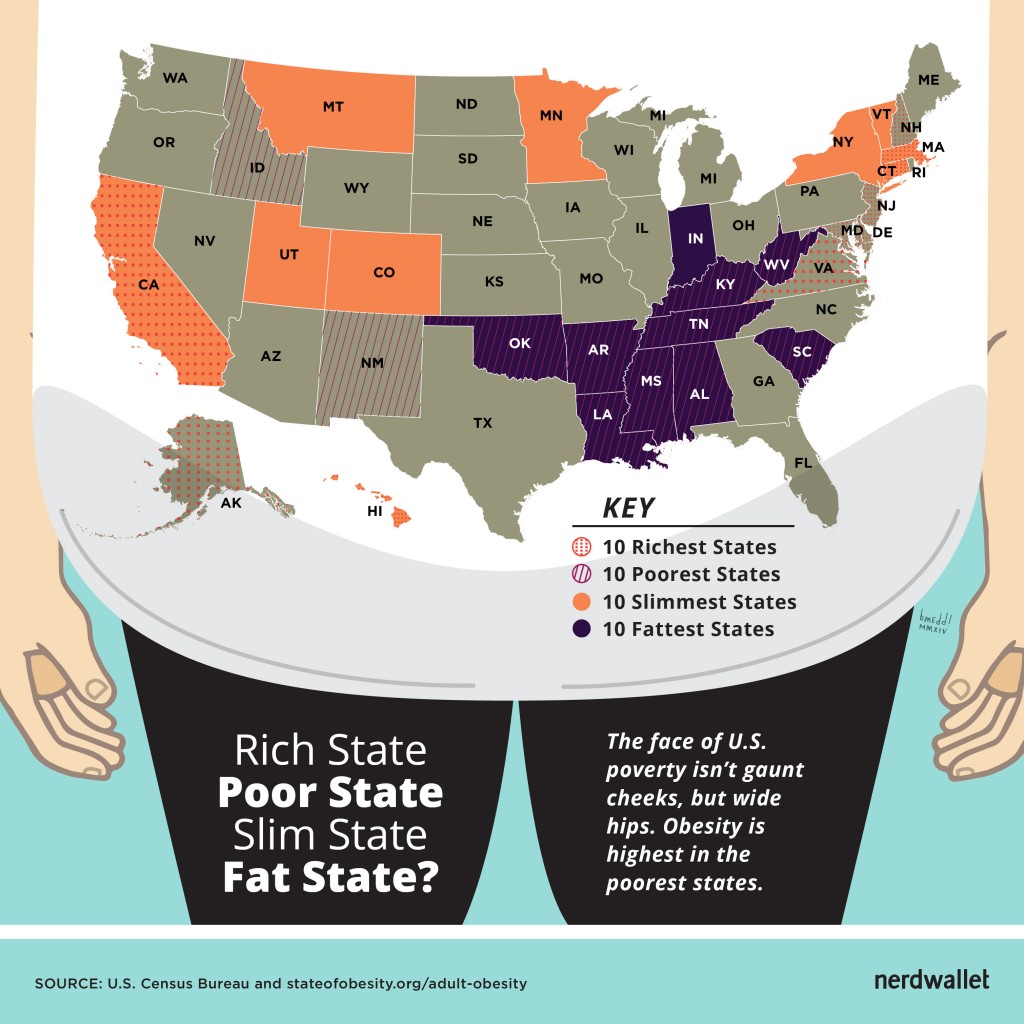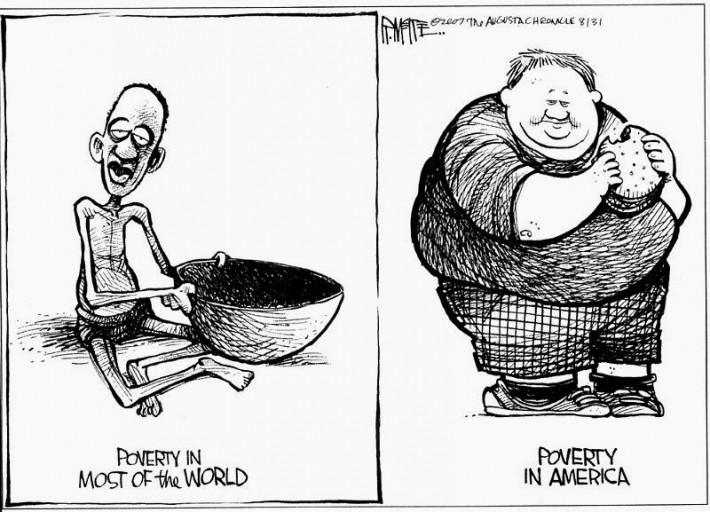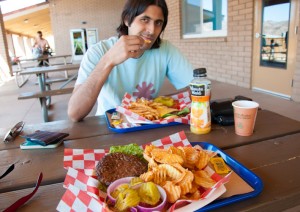For countries as big and rich as the United States, it’s easy to assume that everyone here gets to eat well. While it’s true that most people in the United States have access to plenty of food, the quality of food varies incredibly. We’ve experienced this ourselves in our travels through the US.
In the big cities in the US, healthy food is easy to find. However, it will usually cost more than unhealthy fast food. Even if you want to cook yourselves, ingredients, especially fresh vegetables, will set you back quite a bit. You could spend $7-$10 buying fresh veggies and ingredients to cook your own meal, but when the industrial food complex mass produces cheap $5 meals with a ton of variety (and more additives than you can count), you’ll probably vote with your wallet. The industrial meals stocked on store shelves actually taste pretty good too! This probably comes through millions of dollars spent in market research, focus groups, etc. to optimise taste and shelf life at the cost of throwing in even more additives and preservatives. Food tech for thought.
The rural United States is a completely different story. Eating out options are pretty much limited to a Wendys or McDonalds along the neighbouring highway. If you venture to the more expensive town diner, you’ll probably find a big menu with 90% unhealthy (but delicious) food, and a few healthy options. Ordinarily, the healthy options will have smaller quantities and will cost much more. Customers who are limited by socioeconomic status will again vote with their wallets. I don’t even blame businesses for this, healthy ingredients just cost a lot more.
Bear in mind, that when I say healthy ingredients I’m not even setting the bar that high. We’re not talking about organic or fair trade stuff. Just vegetables and whole grains, even if they’re grown inorganically or heavily processed will often cost much more than those $5 trays you can find in supermarkets across the country.
The industrial food complex in the US is of a scale that I have never seen anywhere else. You can get packaged anything. Pizza? Easy. Butter Chicken? Yes. Pasta? Yes. Sushi? Yes. Lobster? Yes. One of Zara’s favorite pastimes is walking through the frozen foods section at Target. She can walk for hours through those aisles marvelling at all the goodies that even mid-range restaurants like PF Chang’s like to freeze and put on those shelves. A lot of people just think to themselves, why go to Olive Garden where I have to pay $13 for a plate when I could just buy the frozen thing in Target for $8 and save on fuel, taxes, and tips? Microwaved meals are the go-to solution for many families around the country.

This brings us to socioeconomic status and waist sizes. Eating healthy in the US can be incredibly expensive. An unhealthy meal will cost you $5. A healthy meal (one with some vegetables and mostly unprocessed ingredients) will cost you around $15. People who don’t make that much in this country just cannot afford to eat that well. It’s not always about unhealthy eating habits or a lack of good nutritional knowledge. Some people just flat out cannot afford to eat healthy when big-agro have managed to make unhealthy options so appealingly affordable!
Think about it, people who have to work long hours and make little money have low incentives to spend a lot of time figuring out their meals. They cannot spend time at home cooking, and they certainly cannot hire a cook for themselves. They can’t eat out and order healthy meals because those cost a lot too. The cost of fresh ingredients is fairly high so the microwave meal math works out, until you throw in the health cost. Just compare: I have to shop + Spend a lot money + Come home and cook that stuff vs. I have to spend lesser money + Lesser time (microwave it) + It tastes pretty good.
A 2002 study showed an inverse co-relation between socioeconomic status and waist size in women.
In conclusion, rich people get to be thin in the US. If you have to make tough economic choices, your mileage may vary.





Wow! fascinating read. Size is a class issue in the USA but no one really wants to talk about it. Really sad that good food costs so much that it’s cheaper to feed a family with super-sized junk food.
Really interesting article. What I love about your blog is that you don’t just write about the travel that you do, but also your observations of the societies that you visit. I always finding myself explaining the socio-economic dynamics of food, weight and poverty in Australia to my friends and colleagues in Pakistan who associate the word “healthy” with prosperity and weight gain. Such a contrast.